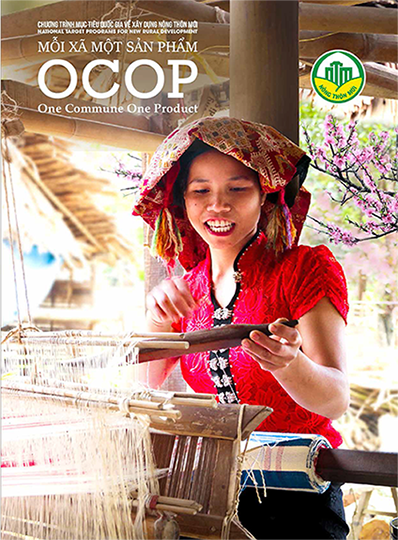1. General Product Safety Directive
When exporting consumer products to the European Union, make sure to comply to the General Product Safety Directive. It states that products sold on the European market should be safe. In case of potential risks, you should take corrective action. A product is safe if it meets European standards and standards in your specific target country. Another key point is that your product must bear information so it can be traced (for example manufacturer’s identity and product reference). Unsafe products are rejected at the European border or withdrawn from the market. The European Union has introduced a rapid alert system (RAPEX) to list such products. It provides information on the type of products, the risks posed, and measures taken at the national level to restrict or prevent their marketing.
2. Registration, Evaluation, Authorisation, and Restriction of Chemicals (REACH)
REACH is a European regulation on the production and trade in chemical substances and describes what rules companies must comply with. This is done through four processes: the registration, evaluation, authorisation and restriction of chemicals. It applies to all products that contain chemical substances such as furniture and textiles. Which chemicals are relevant for you depends on your specific products and materials. For example, REACH restricts the use of: Several azo dyes used particularly for textile products. Lead in paints and glazings of ceramics. Cadmium compounds in various applications. Arsenic and creosotes as wood preservatives. Flame retardants, including TRIS, TEPA and PBB. Organostannic compounds and phthalates in PVC.
3. Food contact materials regulation
If you want to export products to the European market that - either directly or indirectly - come into contact with food, you should comply with the Food Contact Materials Regulation (FCM). It sets out rules on FCM to make sure that substances do not affect the quality of food or consumer health. For the HDHT sector, you can think of kitchenware and dinnerware. In case your product intends to come into contact with food, make sure to check the European food safety authority that provides opinions on substances. Another requirement is that the packaging of products that come into contact with food must be labelled with specific symbols, such as the food-safe symbol.
4. Timber regulation
With the EU Timber Regulation (EUTR) the European Union seeks to prevent trade in illegally harvested timber and timber products. It is forbidden to place illegally harvested timber products on the European market. For the HDHT sector, it applies to, among others, wood products, flooring, plywood and paper. Recycled products are excluded. The natural or legal person that actually places timber on the European market for the first time is responsible to exercise due diligence. This means that operators must undertake a risk management exercise to minimise the risk of placing illegally harvested timber - or timber products containing illegally harvested timber - on the European market. This due diligence system consists of the following elements:
- Information: the operator needs to have access to product information and information on compliance with the national legislation. Upon request, as a supplier you have to provide documents on for example type of product, name of tree species, country of harvest, quantity, company information and compliance with relevant legislation.
- Risk assessment: based on the above information and criteria set out in the regulation, the operator needs to assess if there is a risk of illegal timber in the supply chain.
- Risk mitigation: if there is a risk of illegal timber, the risk can be mitigated by demanding additional information and verification from the supplier If your product is FLEGT or CITES licensed, this product is already considered to be legal and no additional information, risk assessment and risk mitigation are needed.
5. Wildlife Trade Regulations and CITES
With the Convention on International Trade in Endangered Species of Wild Fauna and Flora (CITES) governments want to ensure that international trade in specimens of wild animals and plants does not threaten their survival. This includes products that are derived from these species. It is implemented in the European Union through the Wildlife Trade Regulations. These regulations have stricter conditions than the CITES; more species are listed and it has stricter import conditions.
6. Textile regulation
The European Textile Regulation states that textile products need to be labelled or marked. The purpose is to make sure that consumers within the European Union know what they are buying. It is applicable to all products that contain at least 80% (by weight) of textile fibres. Make sure to have a label that states the full fibre composition of the product and, if applicable, the presence of non-textile parts of animal origin. The label should be durable, easily legible, visible and accessible.
There is no European Union-wide legislation on the use of symbols for washing instructions and other care aspects of textile articles. However, consumers consider care information to be the second most important information on a product label (after size). You are therefore advised to follow the ISO 3758: 2012 standards on the care labelling code using symbols for textiles.
7. Packaging
Europe has specific packaging and packaging waste legislation. This EU Directive was adopted to harmonise measures concerning the management of packaging and packaging waste and to prevent or reduce its impact on the environment at the European level. Buyers may, therefore, request you to minimise the use of packaging materials (paper, carton, plastic) or to use a different kind of (recycled) material. The objective of this Directive is to prevent materials that are harmful to plants or plant products from being introduced into and spreading within the European Union. It also regulates imports from third countries in line with international plant health standards. Keep this in mind when you decide on the packaging of your product.
8. Tips
- Be proactive in updating information, laws and news on the official websites of the European Union in order to timely know the information as well as how to handle each issue.
- Know your products, you need to understand your products have the material, the origin and how to produce them to apply changes on each request.
- Apply for licenses, participate in licensing programs to evaluate your product and make sure you are doing it correctly and properly
Source: https://www.cbi.eu/home-decoration-textiles/buyer-requirements




